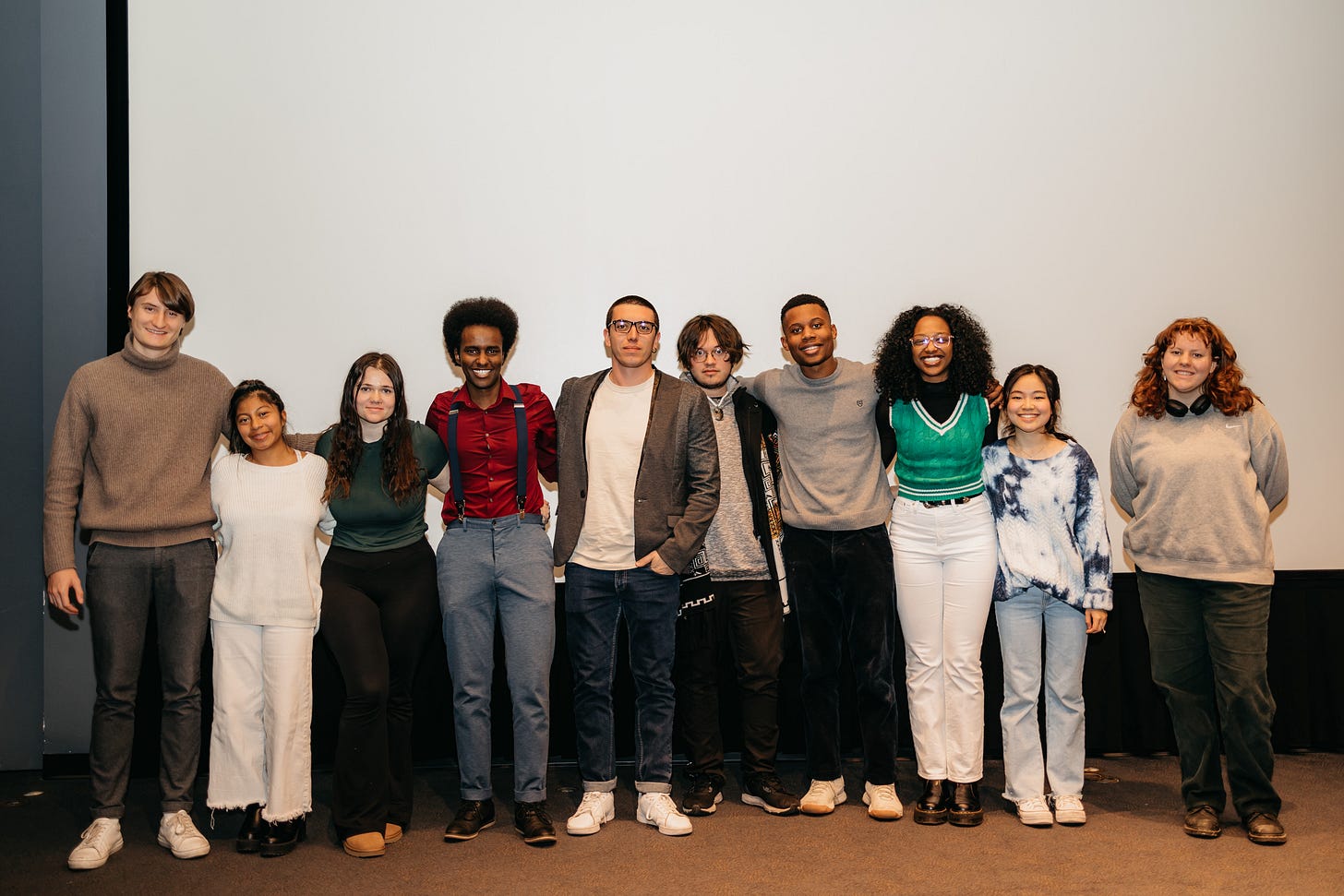Sometimes an idea gets expressed in :30 seconds of TV, sometimes on a billboard, in a brochure, or in a speech, a post on Reels, or through an experience at SXSW. And sometimes that idea comes to life as 15 sessions of a college course where a bunch of humans work it out. As I put it back in August, “teaching and coursework are just other ways of creating and sharing ideas, albeit stretched out over many episodes.”
If you produce a social video, you’ll get pretty immediately feedback. A college curriculum asks you to be patient. So, first and foremost—I’m hugely indebted and grateful to these ten students who came along for the journey.
Thank you Adrian, Carrington, Annalise, Anas, Nicola, Xander, Armel, Hewan, Samantha and Madi
The many episodes of Leading Creative Projects have come to an end. I think what we set out to accomplish was intriguing (here’s the syllabus), but in practice became a bit overwhelming. Here’s the course description:
Being an entrepreneur is hard enough. This course provides a capstone experience to help students beat the odds, and “go pro,” by building their tribe—the team which nurture, challenge and support them and their ideas—specifically through entrepreneurial accelerators, incubators and networks. Students will meet and learn from angel investors, engage with Twin Cities Startup Week, BETA, Lunar Startups, the Collegiate Entrepreneurs Organization and E-Fest, among other national organizations, giving them access to potential capital, sponsors, and investors for their creative project. They’ll learn best practices for distilling a pitch deck. They’ll hone and strengthen their networking practice. And learn to build a “kitchen cabinet” who will nourish and vouch for their vision and integrity. The course culminates in a pitch event and reverse-career fair where students will present their skills and ideas to investors, entrepreneurs, and the community. Students will walk away with lasting national connections, proven practice and the foundation for your entrepreneurial vision to thrive long term.
Stepping back from the experience I think we might have tried to incorporate too many elements, but that’s why you build it and teach it—to learn what works best. This was my third original curriculum. Here’s how I’d evaluate it:
✅ We got out of the classroom and engaged in the local startup community. Integrated with Twin Cities Startup Week should be an even bigger focus next time.
🛑 I probably booked too many guests. On the one hand, everyone who visited class delivered useful, inspiring perspectives. The students said the guests were a highlight. But it’s a trade-off. Guests took away time for reflecting in class on developing startup pitches. We’ll find a balance.
✅ Culminating in a pitch was awesome. The structure we followed made sense and helped guide effective pitches. But we need to devote more time to that practice, since the majority of students had never pitched a startup before.
🤔 This should probably be two courses: The first focused on illuminating core concepts of entrepreneurialism, getting engaged with the local startup scene, and ending with the pitch event. Then the second course would build on that experience with the tribal elements, the world of venture capital and VCs.
“We need your entrepreneurial ideas!”
Last night we welcomed our final guest. Many thanks to Jennifer Gessner from St. Thomas University for Zooming in to introduce our student entrepreneurs to the 2024 E-Fest startup competition. It’s a week long series of events each spring attracting student entrepreneurs from all over the U.S. I attended last year’s pitch night—an amazing experience watching 50+ entrepreneurs deliver their ideas, each in under 90 seconds! And that was just one many pitch opportunities. E-Fest supplies a myriad of free resources and cash prizes to students to encourage startup ideas. I’m optimistic some of our cohort will enter!
My next curriculum is almost complete. “AI for Artists and Entrepreneurs” will begin mid January at MCAD. I’ll be sharing the thinking behind it, and the session breakdown soon. And, of course, I’ll be documenting each session here as we progress.
AI+Creativity Update
⚒️ Software firm Retool just published its 2023 State of AI report. They surveyed 1,500 tech people, and authored lots of useful perspective.
👀 This was inevitable. As Ryan Broderick notes, “Twitch is using AI to detect streams featuring Mountain Dew branding, which then triggers a bot that promotes Mountain Dew in a streamer’s chat.” The tech was developed by production co Unit9, reports AdAge.
💬 Meta just released three Seamless Communication models, which leverage AI to affect translation. The Seamless Expressive demo gives you a sense of what’s to come—translating becomes table stakes and common; then matching your exact voice type and inflection (including lip movement) will follow.
🎬 Sure, you can generate AI T-Pain or AI Demi Lovato, but, as the Hollywood Report reports, “These models are going to essentially require some kind of perpetual license,” the source adds. “And that is something I don’t know that big tech companies are contemplating and or are prepared to deal with.”
👨🏽🎓 The University of Michigan has produced a lot of resources around generative AI. I agree with the report they issued, “More than anything, we are looking to ignite much-needed conversations.”
🎅🏻 Google’s offering 12 days of no-cost generative AI training. The gift is all the awesome perspective and skill you’ll gain.
“Heading off into the sunset” Dall-e3 image to RunwayML for animation



